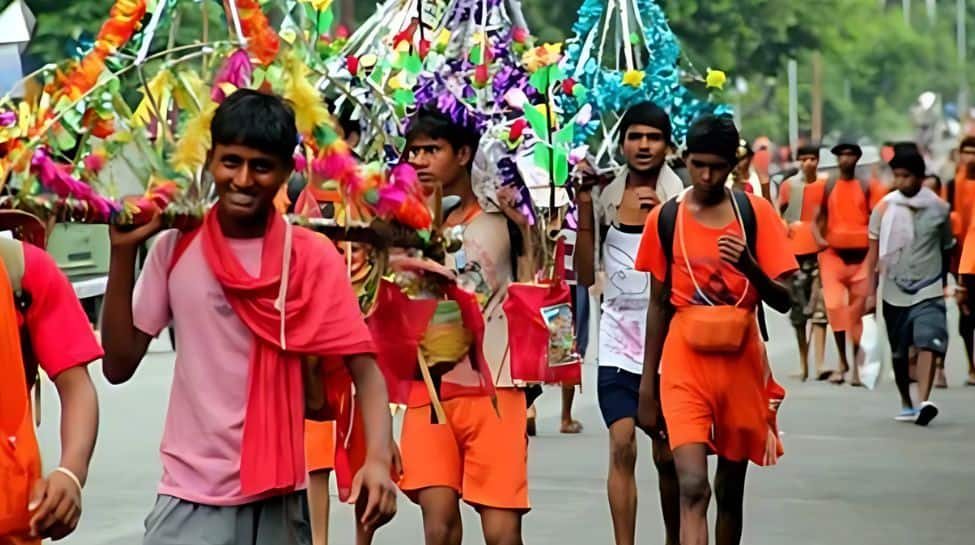This article presents the essence of the Kanwar Yatra, and highlights its spiritual significance, rituals and the enduring faith that makes millions of devotees undertake this holy journey every year.
The Kanwar Yatra is a revered pilgrimage in India, in which millions of devotees travel on foot to bring holy water from the Ganges River. This article highlights the significance of the Kanwar Yatra, its duration, the ritual of carrying the holy water, and the spiritual beliefs that inspire this annual pilgrimage.
Every year during the auspicious month of Shravan (July-August), millions of devotees embark on a spiritual journey called the Kanwar Yatra. This pilgrimage has deep religious significance, as devotees undertake the arduous journey to bring holy water from the Ganges River to their local temples. Let’s take a deeper look at the rituals, beliefs, and cultural aspects that define this sacred journey.
Importance of Kanwar Yatra
The Kanwar Yatra is primarily dedicated to Lord Shiva and is a symbol of devotion and penance. Devotees believe that bringing holy water from the Ganges purifies their soul and fulfills their desires. It is a testimony to their faith and commitment to their spiritual practices.
Duration and timing
The Kanwar Yatra usually begins in the Hindu month of Shravan, which falls in July-August according to the Gregorian calendar. The pilgrimage peaks during the first two weeks of Shravan, culminating on the auspicious day of Shravan Shivaratri. This period is considered highly auspicious for the worship of Lord Shiva.
The ritual of carrying holy water
A highlight of the Kanwar Yatra is the carrying of ‘kanwars’, which are small bamboo or metal vessels filled with holy water from the Ganges. Devotees, known as ‘kanwariyas’, walk barefoot for miles, often hundreds of kilometres, to collect this holy water. This water is then offered at Shiva temples in their hometowns, symbolising their reverence and devotion.
Why do they walk and avoid transport?
Kanwariyas travel on foot as an act of penance and devotion. It is believed that walking barefoot in harsh conditions purifies the soul and demonstrates devotion to Lord Shiva. Many choose to avoid modern transportation as a sign of respect and devotion, and prefer the physical challenges of the journey.
Cultural and social impact
Beyond its religious significance, the Kanwar Yatra fosters a sense of community and camaraderie among devotees. It transcends regional and social barriers, with people from different backgrounds coming together in devotion. The pilgrimage also supports local economies along the route, as businesses and communities provide essential services and support to pilgrims.
conclusion
The Kanwar Yatra is not just a pilgrimage; it is a journey of faith, devotion and spiritual renewal for millions of devotees across India. The ritual of carrying the holy water with unwavering determination and humility reflects the deep beliefs and traditions associated with Lord Shiva. As this annual pilgrimage attracts devotees from all regions, it remains a powerful expression of faith and unity.
